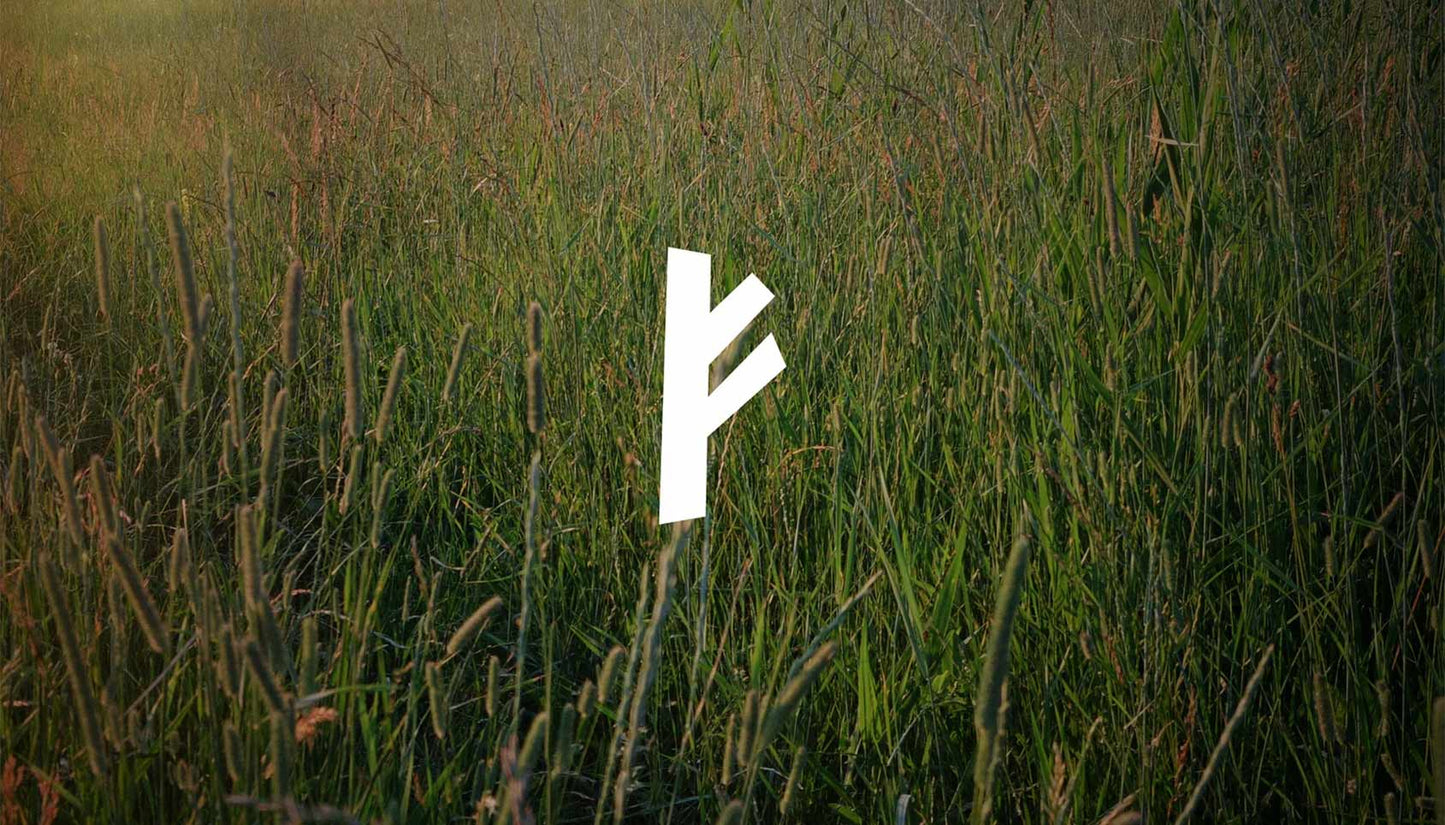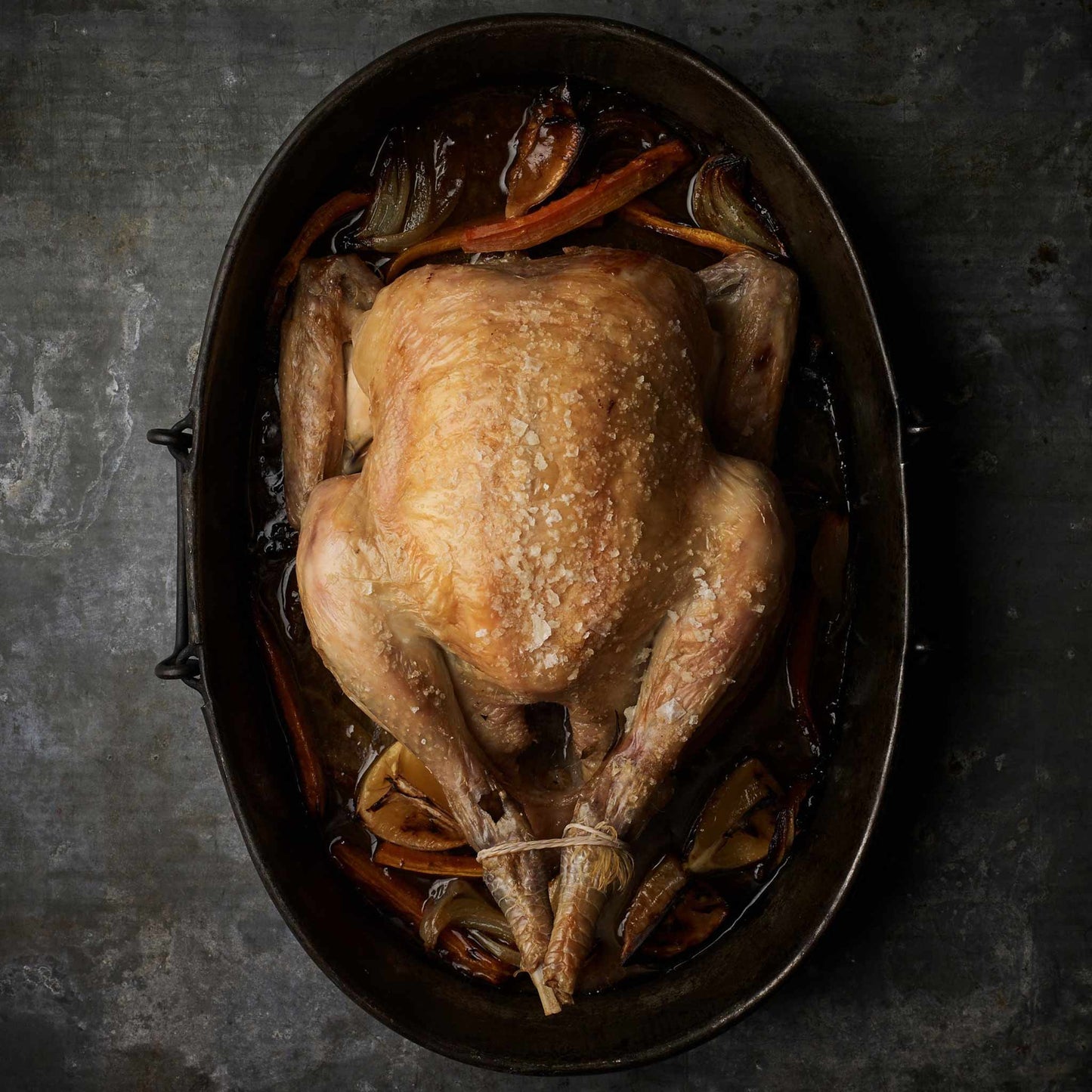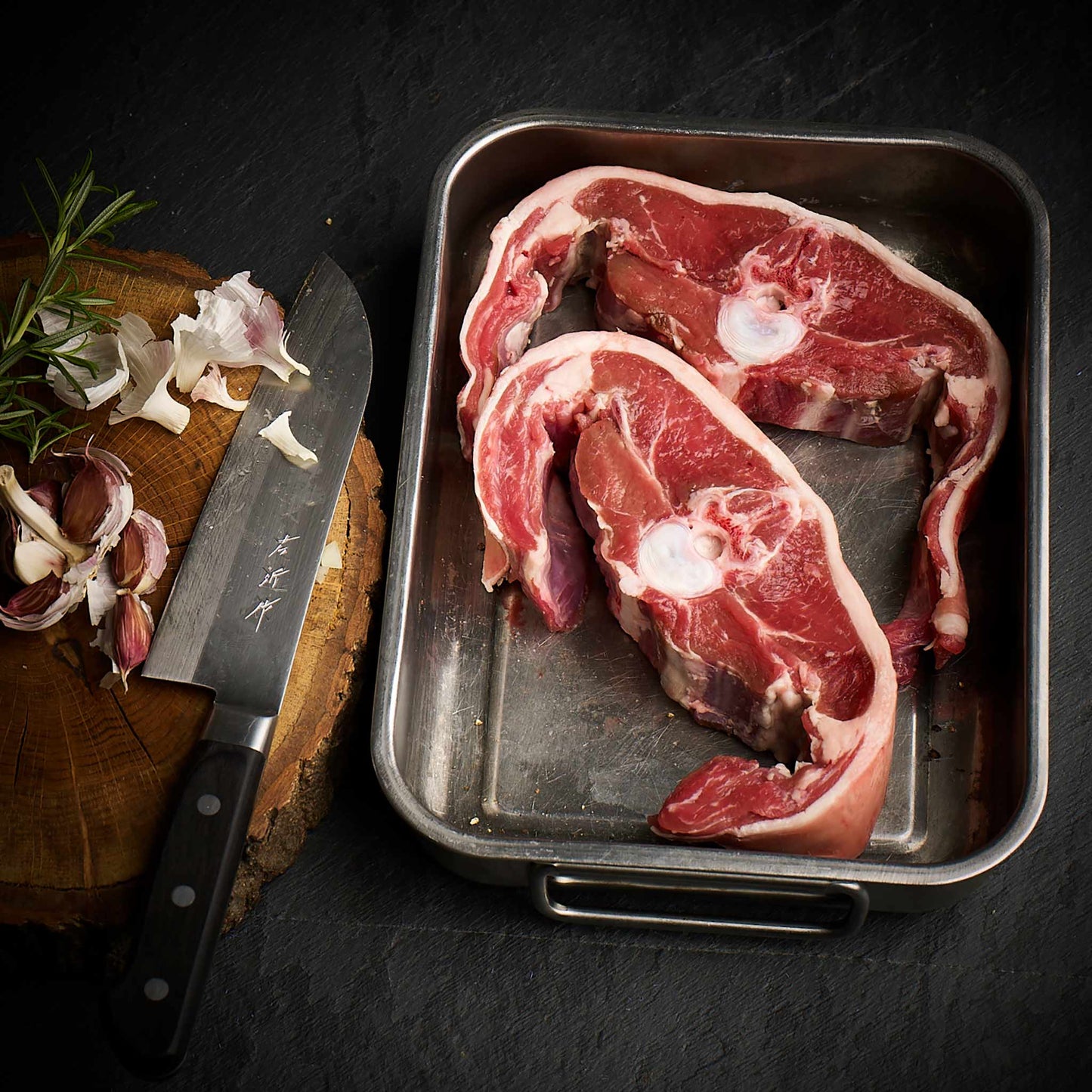We source our chicken from one farm in Leicestershire. The farm is Pasture for Life certified and rears truly free range, outdoor birds.

Summer almost feels like a distant memory as the nights draw in and the weather has certainly changed and yet supermarket shelves in the meat department carry the same produce as three months ago.
Animals that live in controlled industrial conditions can be bred, fed and slaughtered year round as every part of their life is separated from nature, climate, weather and even changing day length.
Obviously we don't approve of these methods and our farmers do things differently.
We think that animals should form a part of an ecosystem and live not just on but with the land and this changes in every metric throughout the year.

A typical year would be:
Spring
When the soil is wet and air temperatures are warm with high humidity, this is a perfect combination for the grass and other plants that make up pasture to thrive.
Summer
Drier air and soils will reduce the the growth rate of the pasture, and in times of drought, the grass plant will not grow at all, and its blades may dry out completely.
Autumn
It’s common for the air to become humid again and for the air temperature to remain warm. Just like spring, conditions become perfect again. However, as the air and soil temperature starts to reduce, the grass plants growth rate also starts to slow down.
Winter
Winter is often referred to as the ‘dormant’ period. Reduced amounts of daylight, and lower ground and air temperatures slows the pasture growth rate down completely, and in most cases, at some points during the winter, the plants will stop growing completely.
A year for our soy free chickens
Our primary chicken producer Mark Chapple rears his chickens outside year round in mobile chicken 'tractors' as they called. These houses offer very light protection from the elements as this is not their purpose, their purpose is to contain the birds on a particular patch of land so that when moved daily the chickens are having a beneficial effect on the land, that and to keep the foxes from eating them.

The image above shows the tracks behind the chicken houses as they move across the land, the birds interact with the land getting anywhere from 25-40% of their nutrition from the pasture which includes the invertebrates they find on the plants and in the top layers of soil.
The supplemental feed the birds receive tops up their diet and is 'recycled' through their digestive system effectively adding that extra nutrition to the land. This external input of Mark's formulated poultry feed is of course free from soy but it is composed of local grains and uses a waste product of cold pressed rapeseed meal from the production of high quality rapeseed oil, this otherwise wasted product contains nutrients that can be directly added to the the soil and hence the greater ecosystem after being broken down and processed by the chickens' digestive system. The circle of nutrients is completed, this is how land is regenerated.
From Marks website:
The birds are moved daily, following our cattle out on the pasture. They fertilise the soil with their droppings and help to minimise fly and worm burdens on the cattle by scratching around in the dung pats, eating insects and larvae. This mimics a natural grassland system as large flocks of birds follow the herds of grazing ruminants.
However, Mark's farm is at 850 ft above sea level on the Devon downs and gets, shall we say, weathered in the winter.
As the chicken's enclosures are open sided there is little protection for the birds in inclement weather and this means that the last birds we receive from Mark are delivered to us before christmas having started their life in September.
After Christmas the land and weather isn't suitable for raising new young birds and the system is given a rest.
Mark starts to rear the poults indoors from late February to be outside from March and ready for us by May, this gap in production is simply necessary for the way he raises them and is recognised by the restaurant Silo who serves marks chicken when in season and shifts the menu to include venison that we source from Packington Estate when the chicken season ends.
It is possible to grow chickens outdoors year round but there is a distinct possibility that they would be reliant on more feed and perhaps not contributing in the same way to the land they are on, perhaps we need to rethink seasonality of our commonly eaten meats?
We supply Mark's chicken to Silo who, with the season, will shift their menu to represent availability of seasonal produce which means that from us, as the chickens end the venison begins:
Below from Max at Silo:
At Silo we focus on sustainability across our whole operation.
One of the most fundamental aspects of that is our collaboration with Ethical Butcher and farms like Redwoods. Through their work, we’re able to cook in a way that is not just sustainable, but regenerative.
In the summer months, when the chickens are mostly living off pasture and forage, they are performing a role and contributing to the ecosystem of their farm. There’s no doubt in our minds that this seasonality produces the most delicious and nutrient dense birds you can find.
As the cooler months set in, the birds are less productive, and we look towards the game season beginning.
Having spent the summer grazing and managing the land at Packington Estate, the deer are bountiful and begin to exceed the available forage. With no natural predators to control their numbers, we are in the lucky position of assuming this vital role. In this position we are again absorbing a natural excess of nutrients, transforming them through cookery into delicious healthy food, and helping the ecosystem perpetuate.
When it comes to meat sourcing and cooking, we think in terms of harvesting animals that have performed a role, lived natural lives, and contributed to the nutrient cycle. Our responsibility is simply to absorb the excess, preserve those nutrients and to do what we can to support these sensible, regenerative farming practices.
Very well put Max, thank you.



